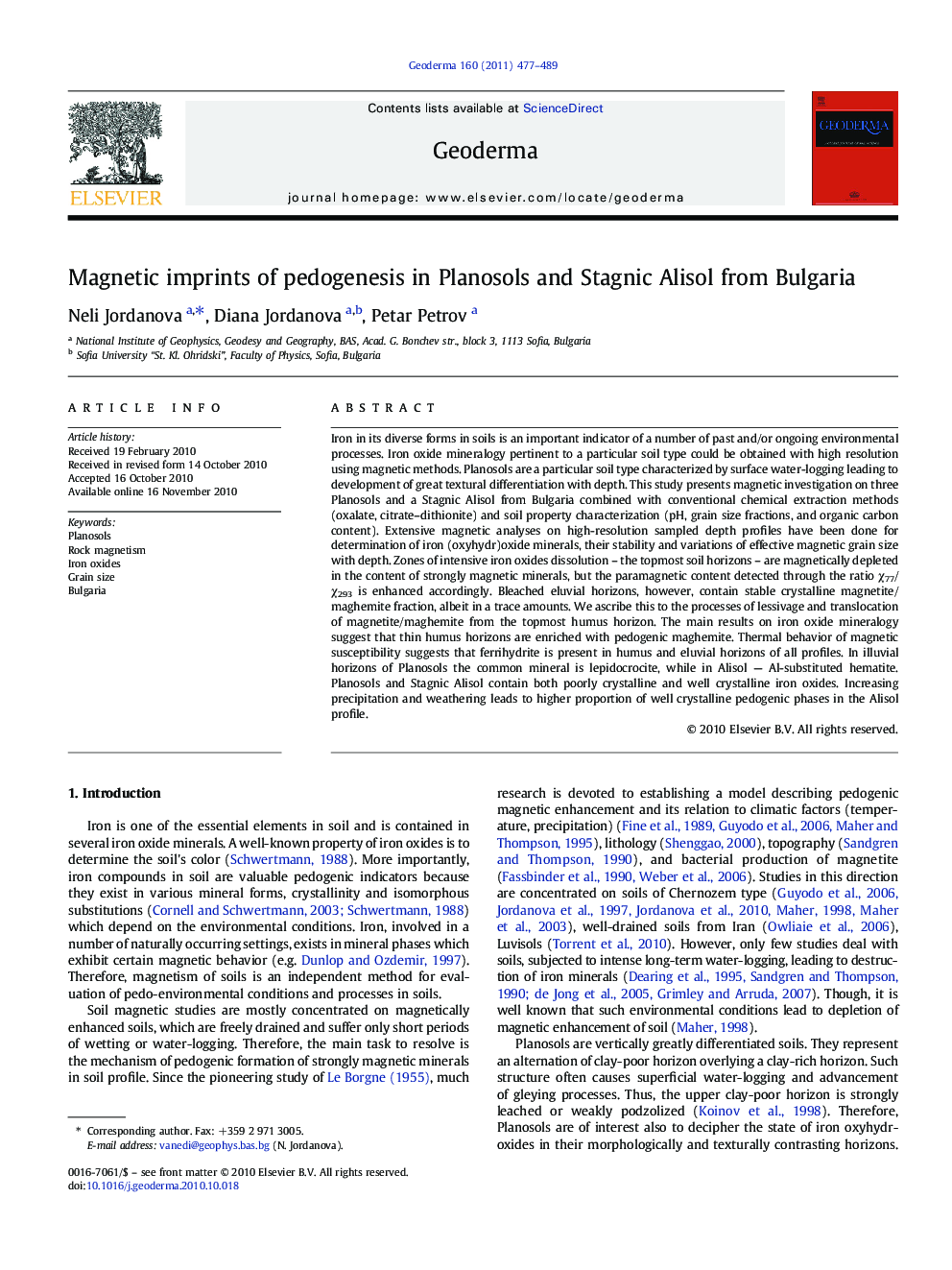| کد مقاله | کد نشریه | سال انتشار | مقاله انگلیسی | نسخه تمام متن |
|---|---|---|---|---|
| 4574264 | 1629514 | 2011 | 13 صفحه PDF | دانلود رایگان |

Iron in its diverse forms in soils is an important indicator of a number of past and/or ongoing environmental processes. Iron oxide mineralogy pertinent to a particular soil type could be obtained with high resolution using magnetic methods. Planosols are a particular soil type characterized by surface water-logging leading to development of great textural differentiation with depth. This study presents magnetic investigation on three Planosols and a Stagnic Alisol from Bulgaria combined with conventional chemical extraction methods (oxalate, citrate–dithionite) and soil property characterization (pH, grain size fractions, and organic carbon content). Extensive magnetic analyses on high-resolution sampled depth profiles have been done for determination of iron (oxyhydr)oxide minerals, their stability and variations of effective magnetic grain size with depth. Zones of intensive iron oxides dissolution – the topmost soil horizons – are magnetically depleted in the content of strongly magnetic minerals, but the paramagnetic content detected through the ratio χ77/χ293 is enhanced accordingly. Bleached eluvial horizons, however, contain stable crystalline magnetite/maghemite fraction, albeit in a trace amounts. We ascribe this to the processes of lessivage and translocation of magnetite/maghemite from the topmost humus horizon. The main results on iron oxide mineralogy suggest that thin humus horizons are enriched with pedogenic maghemite. Thermal behavior of magnetic susceptibility suggests that ferrihydrite is present in humus and eluvial horizons of all profiles. In illuvial horizons of Planosols the common mineral is lepidocrocite, while in Alisol — Al-substituted hematite. Planosols and Stagnic Alisol contain both poorly crystalline and well crystalline iron oxides. Increasing precipitation and weathering leads to higher proportion of well crystalline pedogenic phases in the Alisol profile.
Research Highlights
► Ratio χ77/χ293 along soil depth is a good indicator of clay size pedogenic fraction.
► Planosols and Stagnic Alisol contain both poorly- and well-crystalline iron oxides.
► Stable magnetite/maghemite is present in humus horizons.
► Ferrihydrite and hematite are detected in A- and E- horizons.
► B-horizons are enriched with crystalline phases but lepidocrocite is found as well.
Journal: Geoderma - Volume 160, Issues 3–4, 15 January 2011, Pages 477–489